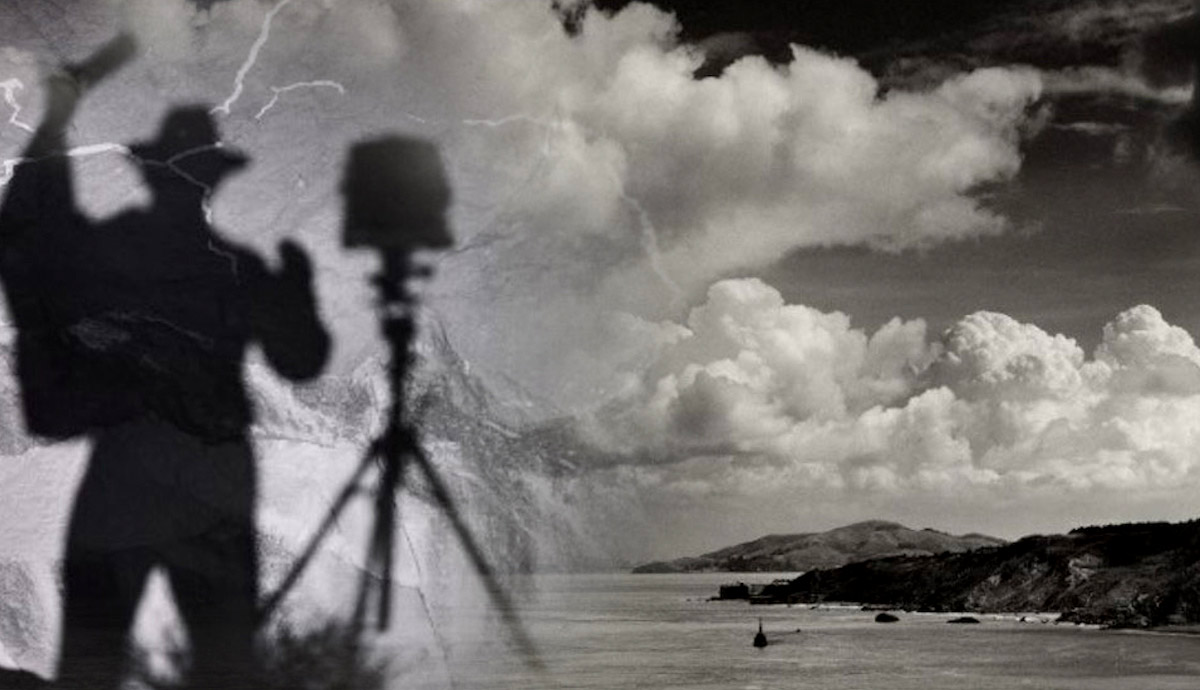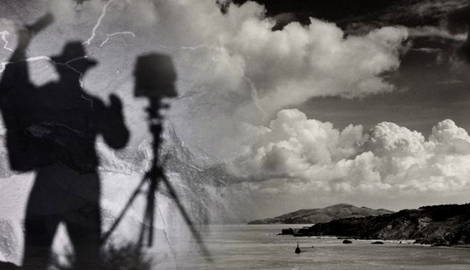
Ansel Adams was arguably one of the most influential photographers of the 20th century. Born in San Francisco, the artist had the opportunity to go back and forth between the thrill of the city and the serenity of the high sierras. As a result, the work of Adams exhibits a tension between urban life and the beauty found in the natural landscape. While many know Adams for his immersive photographs of vast canyons and mountain ranges, his friends also found themselves in front of his camera lens.
1. Ansel Adams’ Cloudy Scenes From Yosemite

At the age of fourteen, the parents of Ansel Adams took the young man to Yosemite Valley for the first time. Seeing it in a book only a few months prior, he was eager to immerse himself in nature on the highest peaks he could climb. It was in this place that Adams was given his first camera and where he took some of his first photographs. Having the desire to explore life in a hands-on manner, the young artist left school at the age of 12 and his education was supplemented through private tutoring and experiential learning gathered from his trips to the mountains.
Adams would return to Yosemite again and again, climbing to new heights and capturing different perspectives of the high sierras. The photograph above exhibits a notable smokey quality as the clouds fill the upper third of the composition. This obscurity lends a sense of expansiveness to the composition that can be felt by the viewer. As the forest recedes into the background, the mountain range opens to us, allowing us to absorb the dramatic light and shadow characteristic of Adams’ early photographs.
The artist’s treatment of the tonal saturation and compositional dynamics is much older than the medium of photography, suggesting Adams’ admiration for landscape paintings of early modern artists such as Winslow Homer and Thomas Moran. A sense of vitality coupled with the truth revealed in scenes of nature inspired Adams to create compositions with lively dynamism that reflected the experience of being on some of the highest peaks in the American West.
2. Landscapes in the City: San Francisco Bay

Photographs of San Francisco Bay comprise a major facet of Adams’ body of work. The composition seen above delivers an expansive view of the clouds and scenery. The atmospheric perspective gives the viewer the sensation of floating above the landscape. Adams highlights the volume of the clouds, while the mountains recede into the horizon. In this work, the viewer is made to feel small in scale compared to the vast expansiveness of the natural landscape.
Adams intentionally chose to photograph places from different altitudes and perspectives to enhance the feeling that we are all a small part of a massive world. This particular moment of the clouds rolling in over the Bay was something Adams sought after for ten years according to a letter he wrote to Mary Austin. After the construction of the San Francisco Bay Bridge, Adams returned here in 1953 to capture the scene once more.
The artist was passionate about preserving the natural environment, urging others to rail against the encroachment of modern technology on land otherwise free of debris, noise, and light pollution. According to the Metropolitan Transportation Commission’s website, the San Francisco Bay Bridge is one of the longest bridges in the United States, carrying up to two hundred and sixty thousand cars per day as part of a major highway. With this in mind, one might wonder whether Adams’ 1953 photograph of the San Francisco Bay was taken to acknowledge the possibility of the bridge to transform the environment of this area forever.
3. Portraits in the City

While Ansel Adams is known for photographing cascading mountains and river streams, he also honed his craft in the city. This composition shows Alfred Stieglitz, a modern photographer and friend of Adams, looking away from the camera with a painting done by his wife Georgia O’Keeffe in the background. The light rakes over the left side of his face, creating a graduation from light to shadow called chiaroscuro over him. Adams met Stieglitz in April of 1933, and the two remained friends, exchanging letters thereafter. Stieglitz went on to arrange an exhibition for Adams in the same location just a year before he passed away.
Some scholars argue this is not only a portrait of Stieglitz, but instead one of a couple. Stieglitz rests his head close to the painting, serving as an index for O’Keeffe. The painting divides the center line of the composition, evoking a feeling of stability and strength against Stieglitz’s leaning composure and far-off gaze. Adams would also visit O’Keeffe in Taos, where she famously painted flora and fauna. During this trip, he would photograph various elements of the landscape, including the living structures of adobe homes that provide shelter without scarring the foundation on which they stand.
4. Travels to Taos

Ansel Adams’ trips to Taos also reflect a certain regionalist approach that evokes closeness to nature indicative of his passion for showing the beauty of the environment and the people who inhabit it. Artist Georgia O’Keeffe met with Adams during his stay, perhaps sharing the places that inspired her most in her artwork. However, it was with Mary Austin that Adams created a book about the Taos landscape. The two worked separately to create a book where text and image work to present a formal idea of Taos solely based on the environment and the ways in which Indigenous design mirrored the landscape. While no people are seen in this composition, Adams’ photograph of the adobe style architecture in Taos shows how people adapted materials from earth to create an environmentally sustainable home, something the artist himself wrote passionately about in his 1962 book: These We Inherit: The Parklands of America.
Adams was a huge proponent of preserving the natural world. In his book about America’s parklands, he wrote about the toll of man’s use of industrial technology on the environment: “Man lived close to nature—a raw and uncompromising nature—and he was a part of the great pageant of sun, storm, and disaster. By the turn of the century the nation came into its adult strength, technology had launched its triumphant opening campaign, and men turned upon the land and its resources with blind disregard for the logic of ordered use, or for the obligations of an ordered future.”

With these words, Adams set out to create works that embraced the true values of nature with the hope of inspiring its preservation in the coming years. In his exploration of the poetry of Henry David Thoreau and the landscape paintings of Thomas Moran, Adams found that the best way to contribute to the preservation of nature was to show its beauty to people in urban settings.
5. Moments in the Gallery by Ansel Adams

As a San Franciscan, the artist spent a lot of time between the city and the mountains. Later, he would go on to visit museums around the world, including the Art Institute of Chicago where this image resides along with fifty-nine other works by the artist. The men in the foreground of this composition appear close together, with the man on the left leaning into the other, grabbing his lapel. On the right, a gentleman wears a focused expression, perhaps illuminating a particularly engaging conversation about the works of art around them. In the background, Mary leans in, gazing down tenderly at baby Jesus. While the painting and the reality taking place in front of it are undoubtedly quite different, they share a degree of intimacy that Adams sought to capture at the perfect moment in the gallery which is sometimes regarded as a spiritual place by art enthusiasts.
One of the most tantalizing characteristics of Adams’ photographs is his ability to mirror the foreground and the background to create a truly symbiotic composition. This can be seen in all the listed examples of his work, though most notably in this work where the postures of men unconsciously mimic the positionality of the figures in the painted background. The mirroring of elements in the front and back of the composition imbue them with a sense of vitality.
Ansel Adams stands out as perhaps one of the most influential photographers of the modern period for his unique use of tone and contrast that gave his compositions a painterly quality. While Adams is renowned for his breathtaking images of the natural world, portraits of friends also attest to the ways in which his relationships formed part of his artistic vision. While photography typically captures moments in time, Adams’ mastery of depth and contrast enables us to move beyond the surface of the print and delve deeper into the nuances of life.








